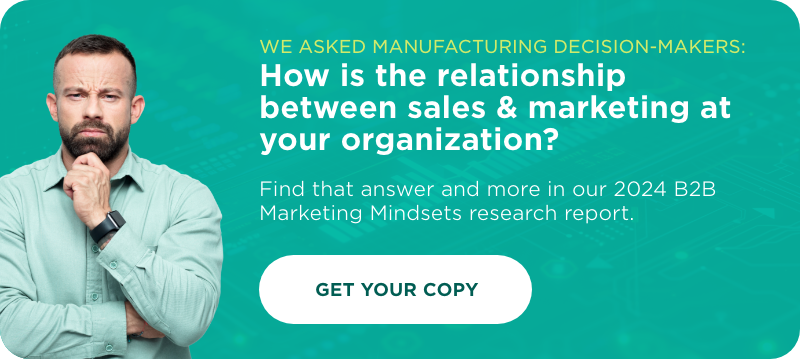Marketing begins with your website—but it doesn’t end there.
The days when websites were optional are long past. Nowadays, it’s hard to imagine a company launching without first checking to be sure their domain name is free. If the first transformation was to turn websites from a novelty into a necessity, the second transformation was to turn them from static websites into responsive, functional tools. Now the time is here for the next transformation: unifying website and marketing into a seamless whole.
To those of us in the industry, this seems obvious. For one, someone interested in your brand is going to check out your website directly. While some businesses exist on social media only, these are few and far between—and most would benefit from altering their strategy. As Twitter has recently shown us, any platform that is not your own isn’t a stable foundation for your business.
However, for many of our clients, the steps to take toward using their website as a marketing tool are less than obvious. They’re not set up for it, and they may not even know what we mean when we start talking about tools and functionality. What they do know—or sense—is that they could be getting more from their website.
So, how do you transform your website into a marketing powerhouse?
1. Make sure your site represents your brand.
When was the last time you updated your site? When was the last time you visited your site? If it’s been more than a couple years, it may be time for an overhaul. The Internet is constantly evolving, and that means that, over time, your website accrues problems that prevent it from working at its best. You’re going to do yourself no favors by drawing a lot of new traffic to a site that’s letting your brand down.
When we say your website should represent your brand, we mean more than just “the logo should be up to date.” This is a website you should feel comfortable on. It should look good, function well, and tell the story of your company to the right audiences.
Questions to ask:
- Does my messaging convey the most important takeaways about my business?
- Is my brand visually cohesive across platforms?
- Are there any glaring usability issues that will drive visitors away?
2. Audit your other marketing resources.
Now let’s look beyond your website to your other resources. Are you on social media? Have you developed conference materials? Do you have sales presentations? Do you invest in traditional advertising? Online advertising? Both?
Understanding where your marketing efforts are going will provide the basis for linking them to your eventual unified website/marketing strategy. It can also help you see what materials need to be updated or replaced.
Questions to ask:
- Where have I put most of my marketing efforts over the years?
- Do my other marketing efforts tie back to the site?
- Are my other marketing efforts visually coherent with the site?
3. Examine your user pathways.
Next let’s think about the people coming to your site. Who are your audiences? Where do they come from? Do you have an email list that you mail to? Do you pass out your business card at trade shows? Do you run advertisements or make posts on social media? Are you optimizing for certain keywords?
Most organizations have multiple audiences and need to balance who they’re speaking to. For instance, a nonprofit may need to speak to donors, volunteers, and members of the general public. A clothing store may split their visitors into men and women. A B2B may serve different industries with disparate needs. Look at your website and think of each of these groups. You should be thinking about how their needs are met, and if any of them are under- or over-served.
Questions to ask:
- Where are visitors coming from, and where is their entry point?
- Can my visitors find the information they’re looking for within a reasonable number of clicks?
- Am I speaking to all my audiences?
- What do I want visitors to do once they land on my site?
4. Create a strategy that focuses audiences toward specific calls-to-action.
There are many ways to attract audiences to your site. You can publish articles with an SEO focus to draw in searchers for a specific keyword. You can link to your site on social media. You can network in person and ask people to come visit. Whatever you do, the last thing you want is to put a lot of energy into growing your traffic and then give those people nothing to do.
A well-developed pathway is like a choose-your-own-adventure, where users feel in control both because they can make their own decisions, and because they are given options that provide direction for where they should go next. Once you get them to their destination, you should have a conversion purpose in mind. Whether that’s “sign up for my email,” “share an article,” or “complete a purchase” is up to you.
Questions to ask:
- What audience am I talking to, what is their need, and how can I help them?
- Are my audiences too generalized to create meaningful interactions?
- Am I speaking to audiences who aren’t aligned with profitability?
- Where is my audience coming from, and where do I want them to land?
- How will I keep in touch with my audience once they’ve left my site?
5. Use your website like the responsive, customizable tool that it is.
Finally, remember that your website is not static. It’s a program that can be built to perform any number of functions, from guided wizard tools to event scheduling to product purchases. As your marketing works in your favor to draw in more visitors, you should be constantly assessing your website to be sure it’s delivering its peak potential.
Questions to ask:
- Can my website be doing more for me?
- Would my sales or marketing processes benefit from being more integrated with my website?
- Are disconnects between my website and my current tools, such as my CRM, causing me to miss opportunities for better audience engagement?
None of this is going to work without a team to keep it going.
If at the end of this your first thought is “that’s a lot of work,”—well, that’s what we’re here for.
We’ve worked with plenty of clients who just want a website and prefer to handle the marketing themselves. We’ve worked with other clients who just want marketing and are prepared to let the website get by for a while. Most of our clients have their own marketing teams who are fully capable of doing the job themselves.
But we also witness a lot of confusion, mixed signals, and stagnation. We know our clients. We know they’re highly qualified professionals. We also know they’re topped out on their own initiatives and have little time to spare toward writing new content, managing their Google Ads, posting to social, optimizing SEO, updating their site infrastructure, and building out new functionality.
That’s why we’ve organized our teams to work in sync with our clients. Every client has a project manager, a content writer, and a graphic designer. Their jobs are to interface with your team and make sure you are supported. And what we find is that, once your team isn’t stretched to its limits, the extra breathing room is transformative.
The transfusion of new team members energizes and reinspires them. The added bandwidth allows them to accomplish their own initiatives instead of just treading water. And after all, that’s what we believe our greatest strength is: that when we make your priorities our priorities, work gets done.
If that sounds appealing to you, we’d encourage you to contact us today. We’re happy to consult with you and help you come to a closer understanding of your needs.






